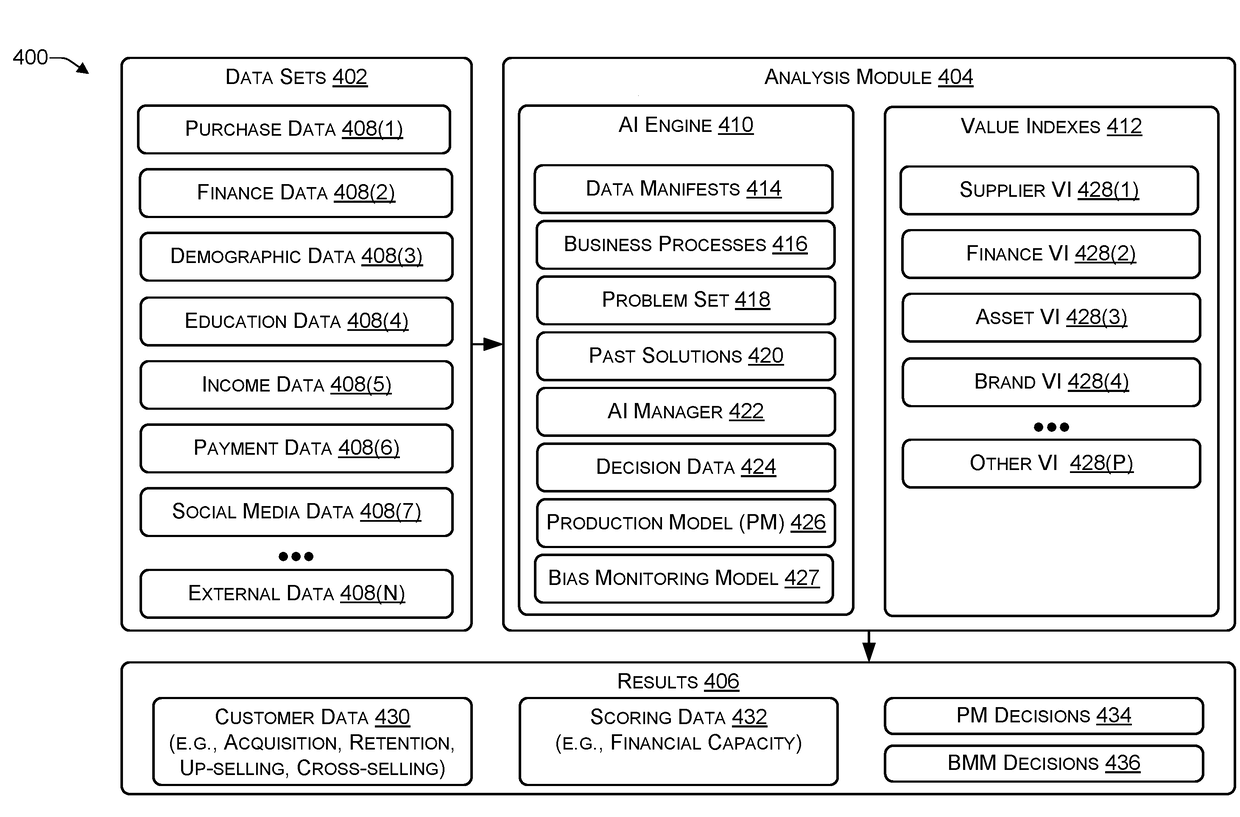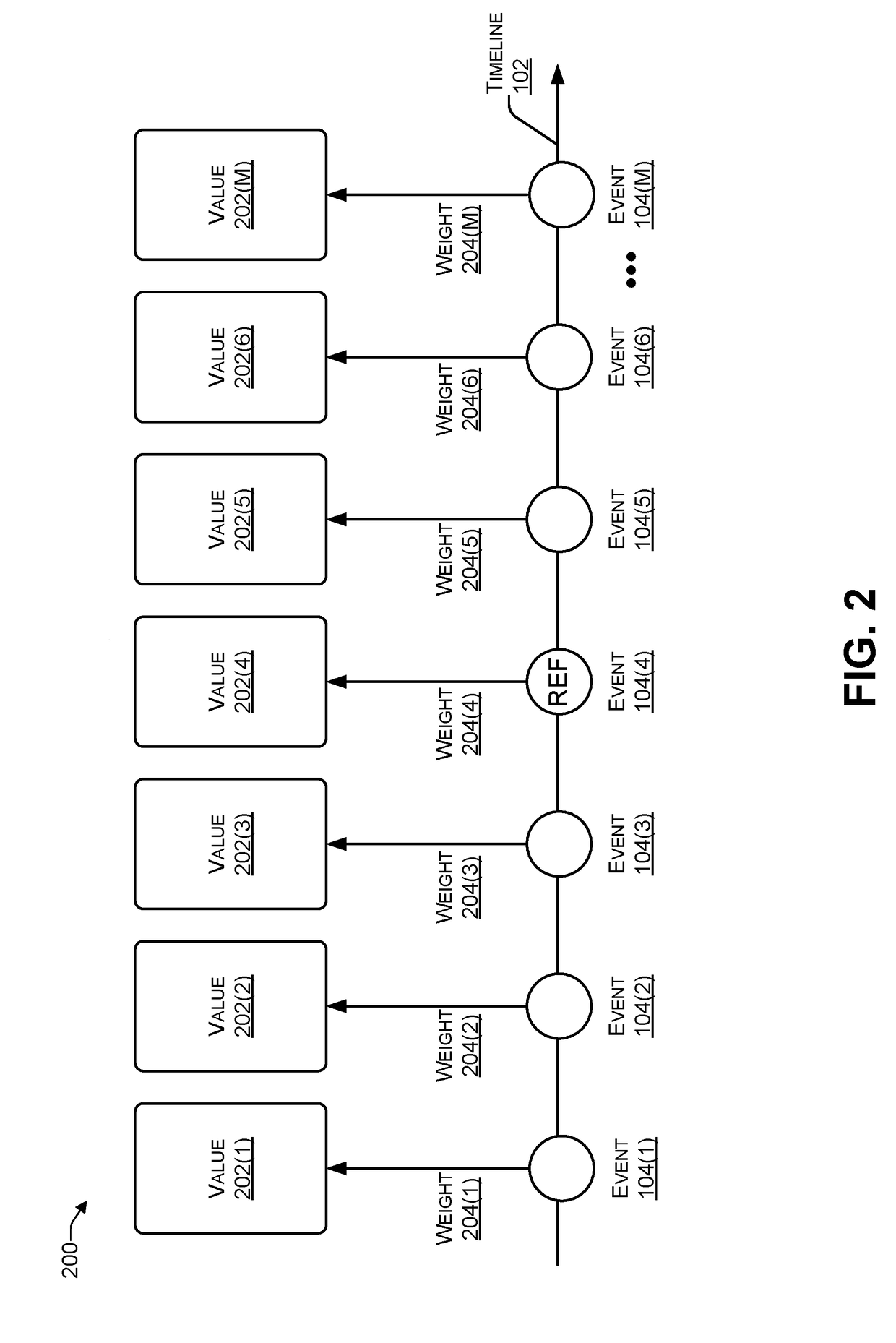Detecting and reducing bias (including discrimination) in an automated decision making process
- Summary
- Abstract
- Description
- Claims
- Application Information
AI Technical Summary
Benefits of technology
Problems solved by technology
Method used
Image
Examples
Embodiment Construction
[0023]The systems and techniques described herein may be used to detect bias in an automated decision-making process, identify the particular rules in the automated decision-making process that are causing the bias, determine the relative contribution of each particular rule to the bias, and modify the particular rules to reduce the contribution of the particular rules to the bias. Decisions made by the automated decision-making process may be monitored to determine whether any of the decisions were biased. When bias is detected, the rules contributing to the bias may be identified and modified to reduce the bias. Thus, the business rules may be repeatedly modified to reduce bias when bias is detected in decisions.
[0024]A production model (PM) refers to a machine learning model (e.g., algorithm) that has been trained using historical data to make decisions. A bias monitoring model (BMM) refers to a machine learning model that has been trained using unbiased (or pseudo-unbiased) data...
PUM
 Login to View More
Login to View More Abstract
Description
Claims
Application Information
 Login to View More
Login to View More - R&D
- Intellectual Property
- Life Sciences
- Materials
- Tech Scout
- Unparalleled Data Quality
- Higher Quality Content
- 60% Fewer Hallucinations
Browse by: Latest US Patents, China's latest patents, Technical Efficacy Thesaurus, Application Domain, Technology Topic, Popular Technical Reports.
© 2025 PatSnap. All rights reserved.Legal|Privacy policy|Modern Slavery Act Transparency Statement|Sitemap|About US| Contact US: help@patsnap.com



